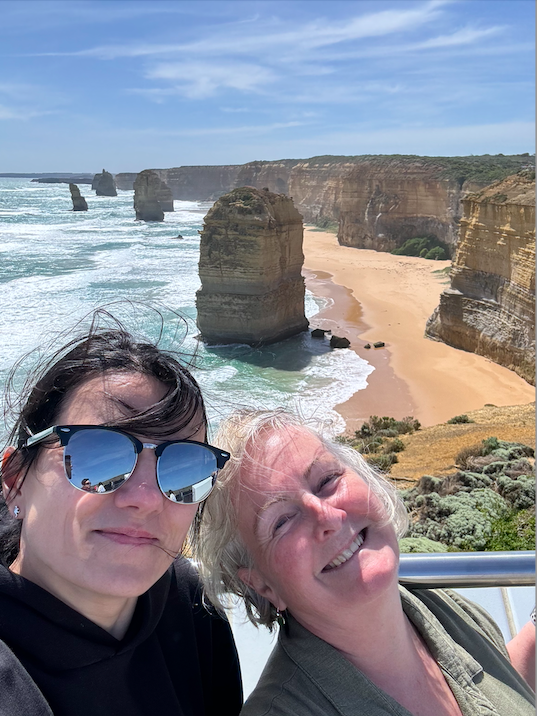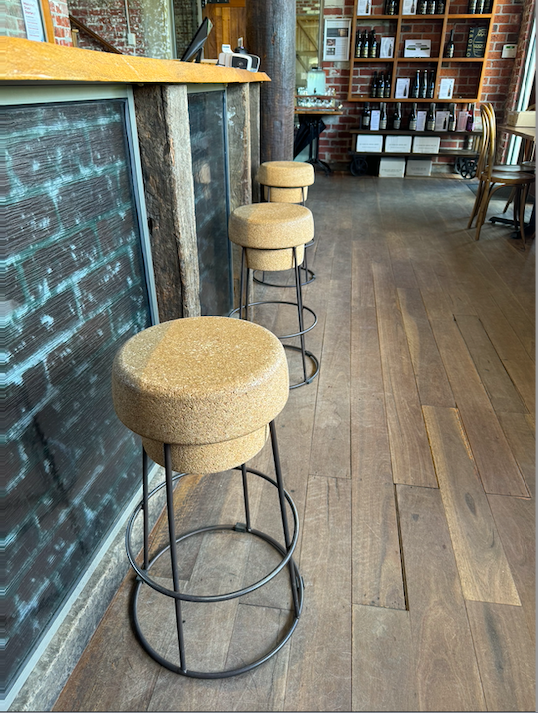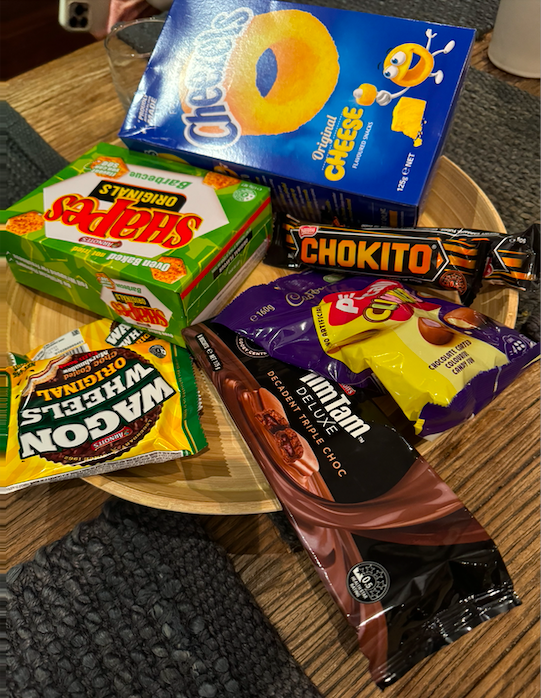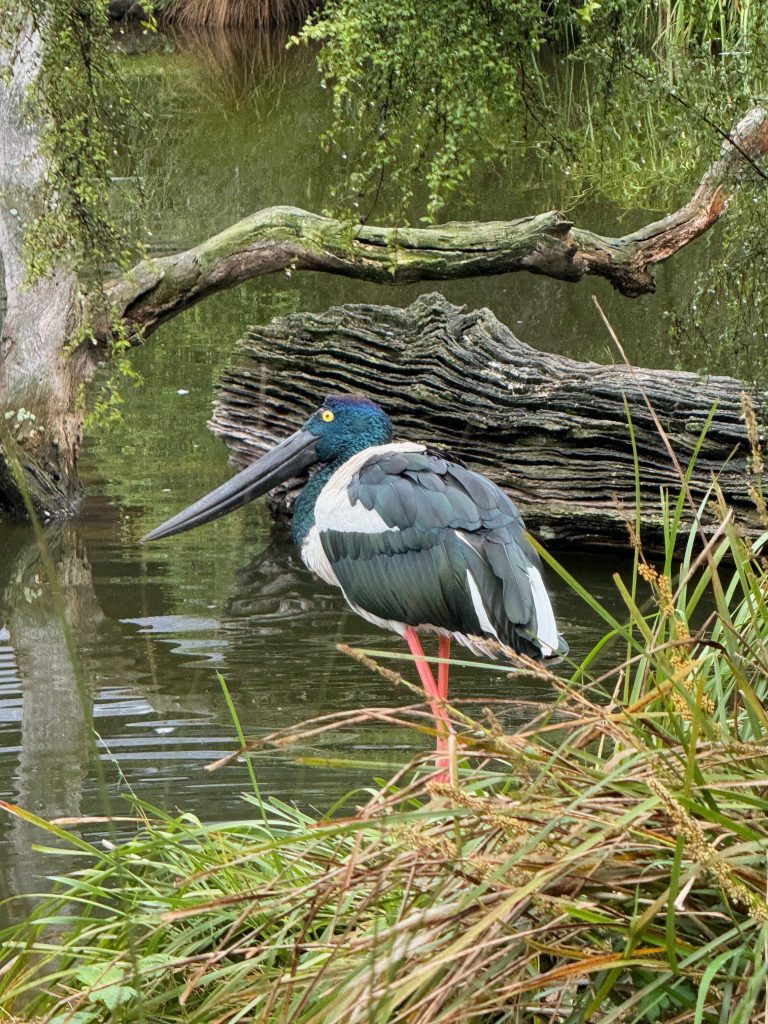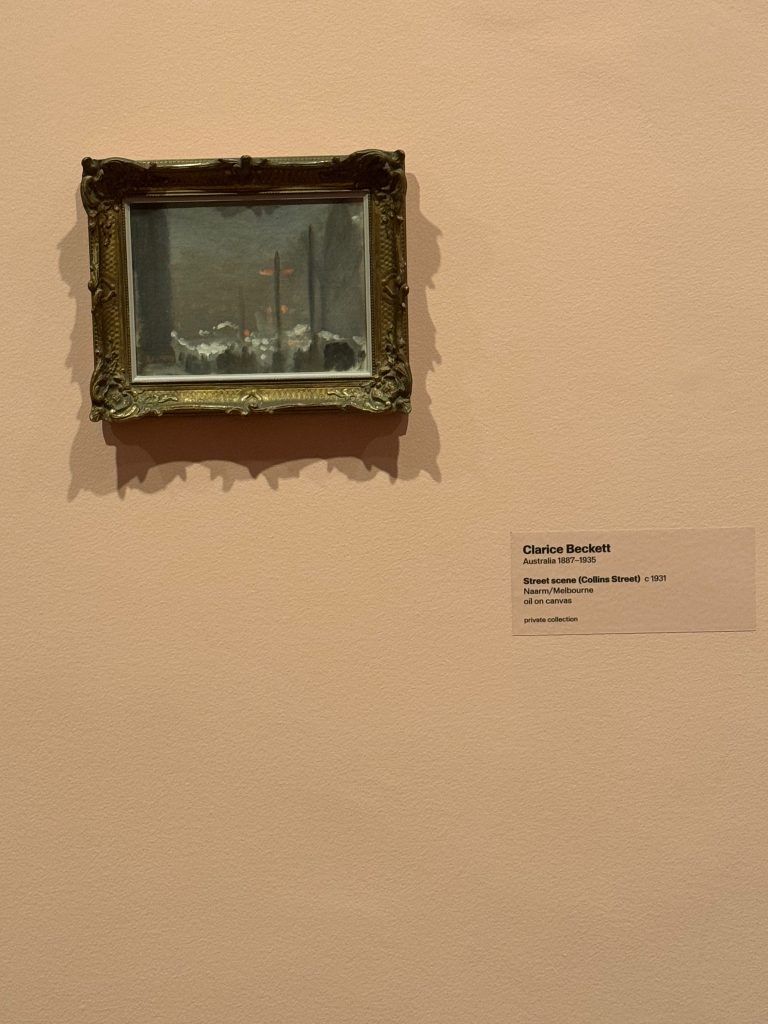
I’ve mentioned before that I have a chronic cough and it’s been pretty good during the trip, thanks to lots of peppermint oil in my water, cough lozenges, chewing gum and medication from the throat specialist. However, when I woke up at 5:30 with a cough, I knew that it wasn’t going to stop happening. There’s a lot of dust involved with sleeping in a cave.
Luckily, I’d gathered my things together the night before, so I grabbed everything – including a book and my reading glasses, naturally – and headed quietly outside.
It was pitch black, but after I’d enjoyed using the amenities block, the sunrise had started. I was too late for spectacular photos, but I got these. In the top shot, I was rapt to see a ‘planetary’ friend.

My alarm was supposed to go off at 7, so for the rest of the time, I sat in the kitchen area and read my book. I have to say, for anyone paying attention to the ‘Camping’ word in this property’s title, Riba’s Underground Camping is a pretty good site. Everything is clean, the kitchen has everything you’d want and the amenities block also has washing machines as well as the usual, and it’s only a short drive from town.

At 7, I went and woke them up. Because there was no ensuite, there’d be no coffee – or so I assumed. But Liga had planned ahead. I don’t remember if I told you that she’d asked me to buy a mini gas bottle for her camping oven? We had our coffee after all.
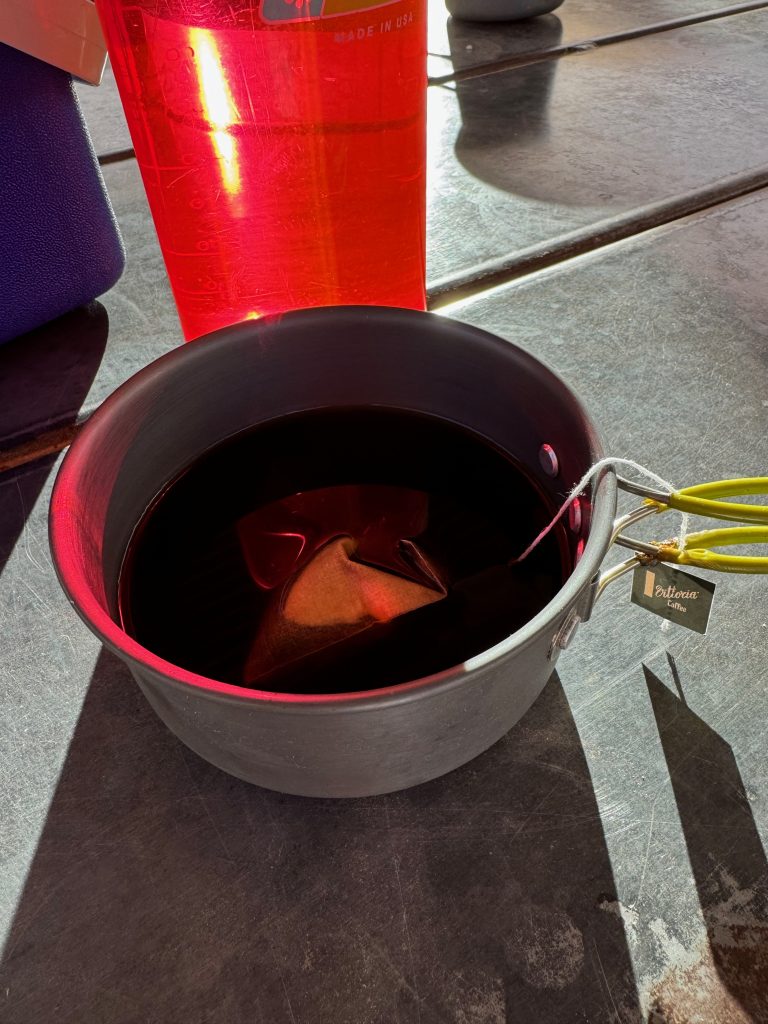
My morning coffee next to my Antarctica Pee Bottle.
Liga and I sat and chatted and she told me some stories about her army life in Latvia. She was selected to be part of really tough training for what we’d call Army Reserves. She was the only woman out of 20 participants. She’s keeping up with them too, though they’ve learned that it’s wise to wake her with a cup of coffee in the mornings!

Water is such a precious commodity here. The water for the town is brought in from a bore 28 KMs away.

After that, we were on the road again on our last full day together.
Just as we turned onto the Stuart Highway, you wouldn’t credit it. A herd of brumbies was munching grass right up near the road. They couldn’t have gotten any closer unless they were sitting in the car with us! I couldn’t believe it. When I was here in September, all the brumbies we saw were way off the road and hidden amongst trees.
I don’t know what special magic Latvians bring with them, but I’ve never seen so much wildlife in all my days. Fortunate Frogdancer has nothing on these two!

We stopped for a break at an isolated stop and Liga decided she was going to do a bush wee. As soon as she started to disappear among the trees, of course an RV drove in. I’m pretty sure that it wouldn’t have bothered Liga though.
But then she REALLY got her wish, when we stopped for lunch at a very greasy roadhouse.

Like, seriously? Who thinks this is great decor?
“There are many spiders’ webs up there,” said Liga. Some of the bras and hats had dates written on them that went back YEARS.
While I was eating my small bowl of chips – I figured that was a safe thing to buy here – the girls went into the back snooker room to look at the pinball machine. Suddenly, I heard shrieks of fear and they came rushing back in.
“There was a big bug… a cockeroach!” said Liga2, her eyes as big as dinner plates.
“I felt something on my foot and it was on it, trying to eat me,” said Liga, who was unfortunately wearing sandals.

When I finished my chips, I went to investigate. When Liga flipped it off her foot, it landed on its back so it was stuck. Now, I have a small foot, but even so, this thing was LARGE.
We left it there for the staff to find and went back to the car.
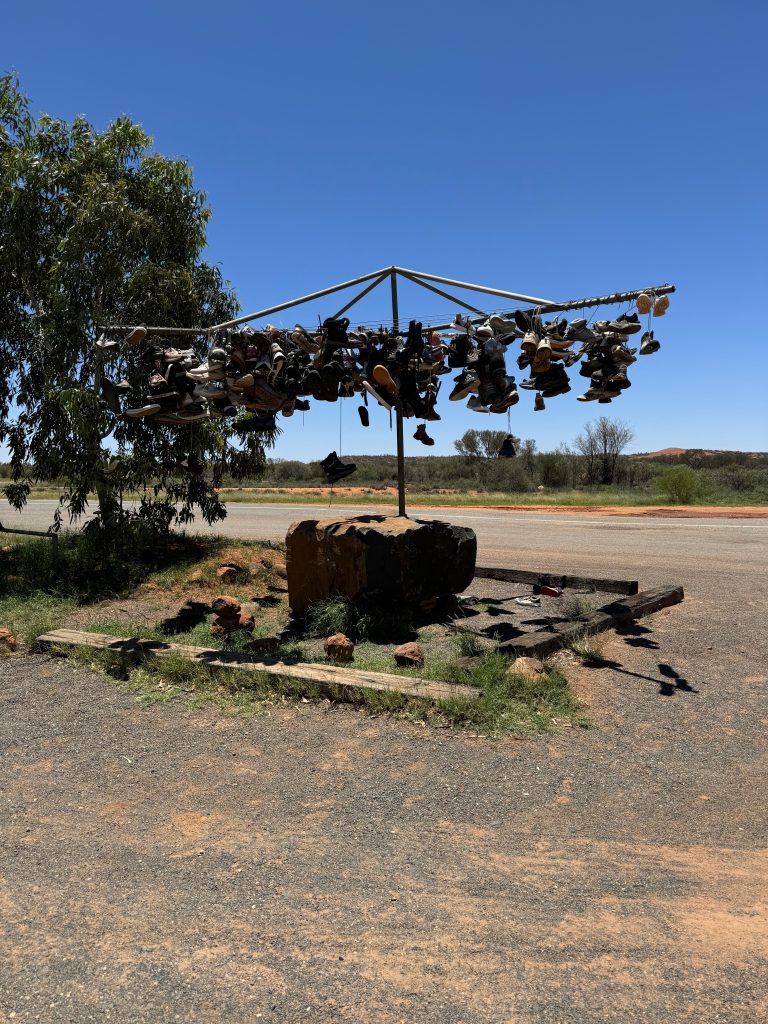
I don’t know why this roadhouse has a thing for discarded garments, but here we are.
On we went towards Uluru. Liga took over the driving again and I sat back and relaxed.

As we were coming up to the turnoff towards Yulara (which is the resort beside Uluru) I saw the sign for the roadhouse. Erlunga.
Hang on, wasn’t that the roadhouse we stopped at that had the exact centre of Australia on it? It turns out that yes, yes it does.
I was so pleased that I’d done the trip in September, because otherwise I would never have known about it.

We also looked at the emus and heard their strange low, hollow calls to each other.
“They are very ugly birds,” said Liga. She wasn’t wrong. These ones looked desiccated and strange.

The turn-off to reach Uluru is still nearly 300kms long. On the way is the lookout for Mt Conner, the ‘Fake” Uluru.
“It is such a shame,” said Liga. “This is beautiful rock in its own right – very spectacular – yet no one cares about it.”

And here we are.
Liga2 and I drove out to the Rock on our own after Liga wanted to stay in the room and wash her hair. She was cross because in her booking, she’d asked for 3 beds and the email arrived confirming that… and then once we were here, we were given 2 Queen beds.
Liga2 and I took the 16 km drive to see Uluru and she was delighted.
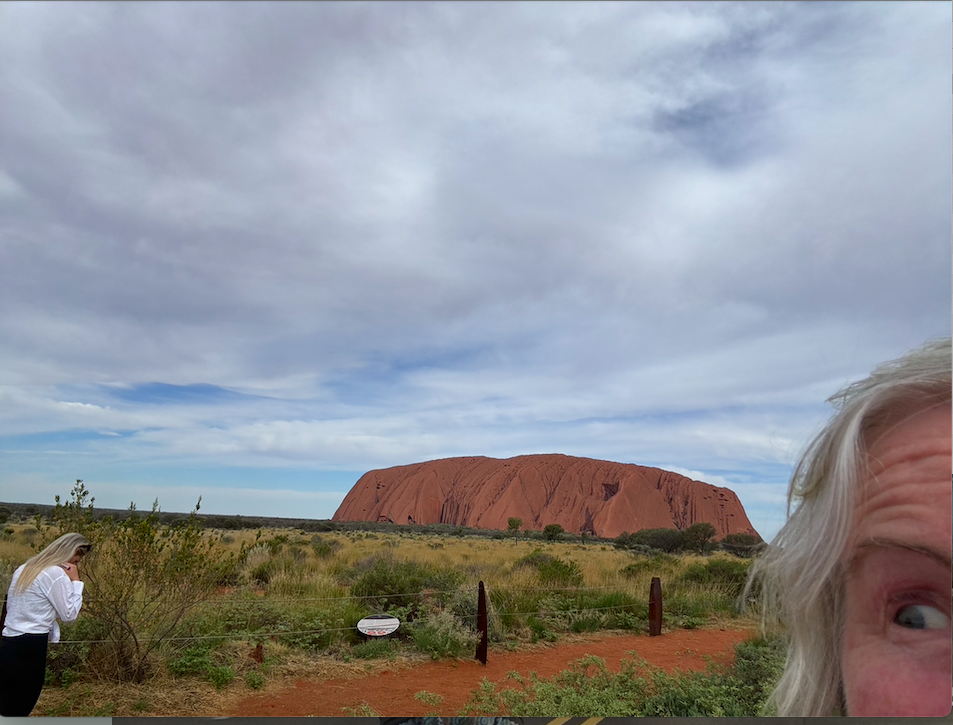
So was I, though I wasn’t nearly as Instagram-worthy about it!
We drove around for a while, so Liga2 could get her bearings for the next day when they’d be driving on their own, then we went back, found Liga, and the girls swept me off for a delicious dinner as a thank-you for the trip.

Even though I’d cuddled that gorgeous little joey the day before, I still ordered Wallaby Ragu. I regret nothing.
The weather forecast for the next few days was for cloudy skies, with tomorrow morning being the clearest. The plan is to wake up at 4:30 AM to go and see sunrise at the Rock.
Dad Joke of the day:




























































